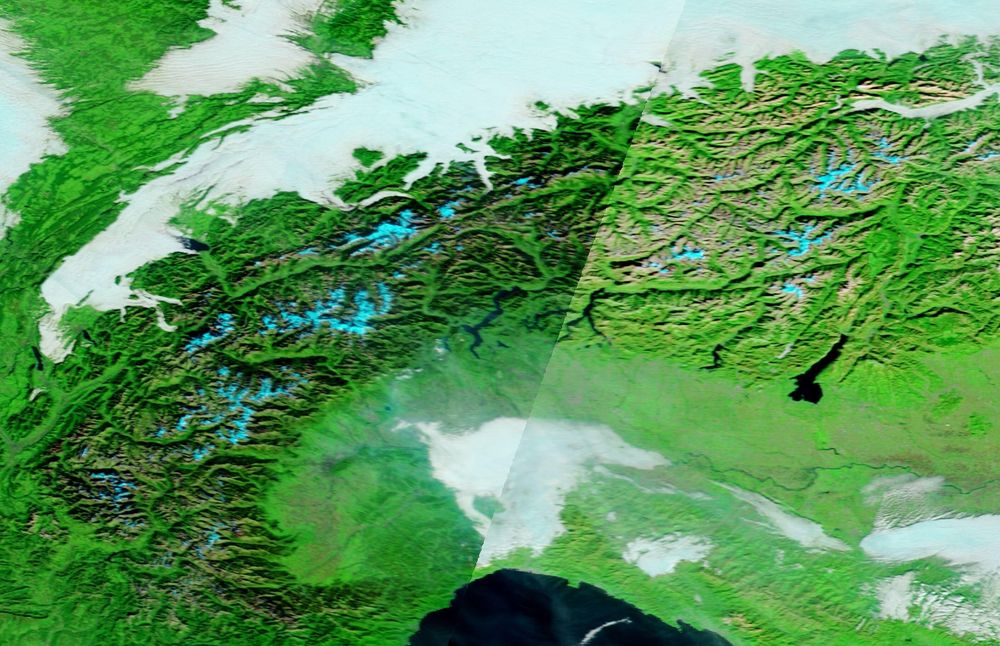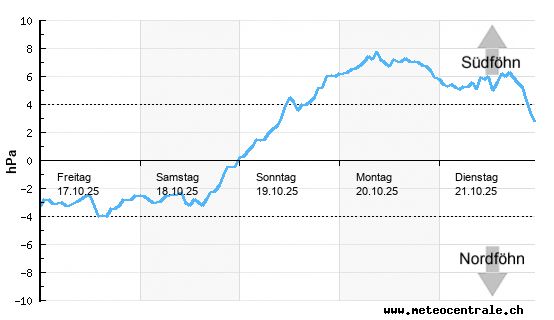
Passionate about all weather and science. Hiking and skiing.









Beyond that, however, there is considerable uncertainty (according to the GFS ensemble) 🤔


Beyond that, however, there is considerable uncertainty (according to the GFS ensemble) 🤔





Kudos to @climatologist49.bsky.social



Kudos to @climatologist49.bsky.social
Meanwhile, a record-breaking extratropical cyclone—termed a “weather bomb”—has intensified near Newfoundland, with a minimum central pressure of 943 hPa recorded on Wednesday morning.


Meanwhile, a record-breaking extratropical cyclone—termed a “weather bomb”—has intensified near Newfoundland, with a minimum central pressure of 943 hPa recorded on Wednesday morning.
According to Modis/Terra: more snow today ⬇️
than this time last year ↘️



According to Modis/Terra: more snow today ⬇️
than this time last year ↘️
Temperatures are rising above 20°C in northern Grisons, the Sargans area, and also northwestern Switzerland.


Temperatures are rising above 20°C in northern Grisons, the Sargans area, and also northwestern Switzerland.
The 96-year record shows a historical maximum of 165 cm.

The 96-year record shows a historical maximum of 165 cm.
In Switzerland a bit colder than usual, exception Alps/south.

In Switzerland a bit colder than usual, exception Alps/south.
With only slow movement, potentially catastrophic flooding threatens Jamaica, Haiti, and later the Bermuda region.


With only slow movement, potentially catastrophic flooding threatens Jamaica, Haiti, and later the Bermuda region.
TD 98L may develop into Tropical Storm Melissa, but ensemble spread (ECMWF and google) indicates high uncertainty in its evolution!

TD 98L may develop into Tropical Storm Melissa, but ensemble spread (ECMWF and google) indicates high uncertainty in its evolution!
A regionally anomaly - northern Canada, Greenland, and Siberia exhibit above-seasonal warmth.


A regionally anomaly - northern Canada, Greenland, and Siberia exhibit above-seasonal warmth.
Strong southwesterlies wind (coloured) in the Jura. Strong pressure gradient over the Alps (isobar spacing 1 hPa; two zones of enhanced gradient) driving vigorous southerly föhn winds. Hotspots: Haslital, Erstfeld vicinity, Balzers/FL, and Appenzell.

Strong southwesterlies wind (coloured) in the Jura. Strong pressure gradient over the Alps (isobar spacing 1 hPa; two zones of enhanced gradient) driving vigorous southerly föhn winds. Hotspots: Haslital, Erstfeld vicinity, Balzers/FL, and Appenzell.
A clear night into Sunday will bring cold conditions, with frost and hoar on grass and cars.

A clear night into Sunday will bring cold conditions, with frost and hoar on grass and cars.
The first föhn event of this October is now occurring: on Sunday, southerly winds over the Alps will intensify, with gusts reaching up to 80 km/h in typical valleys by Monday morning and midday, accompanied by highs of 18°C.

The first föhn event of this October is now occurring: on Sunday, southerly winds over the Alps will intensify, with gusts reaching up to 80 km/h in typical valleys by Monday morning and midday, accompanied by highs of 18°C.
Only (whole) October 2024 (+0.79) and October 2023 (+0.76 deg) were warmer.
Source: climatlas.com, based on JRA-55 reanalysis

Only (whole) October 2024 (+0.79) and October 2023 (+0.76 deg) were warmer.
Source: climatlas.com, based on JRA-55 reanalysis
However, a developing La Niña is evident in the eastern tropical Pacific, concurrent with a negative Indian Ocean Dipole (IOD).

However, a developing La Niña is evident in the eastern tropical Pacific, concurrent with a negative Indian Ocean Dipole (IOD).



